Hot on the heels of Callaway releasing the latest version of their popular Mack Daddy wedges, the Mack Daddy 3 Milled series, I met up with their designer, Roger Cleveland, in St Andrews prior to the 2015 Open Championship.
Roger was happy to chew the fat on all things wedge and gave great insights into bounce, the importance of technique and the impact of the 2010 groove changes on the short game.
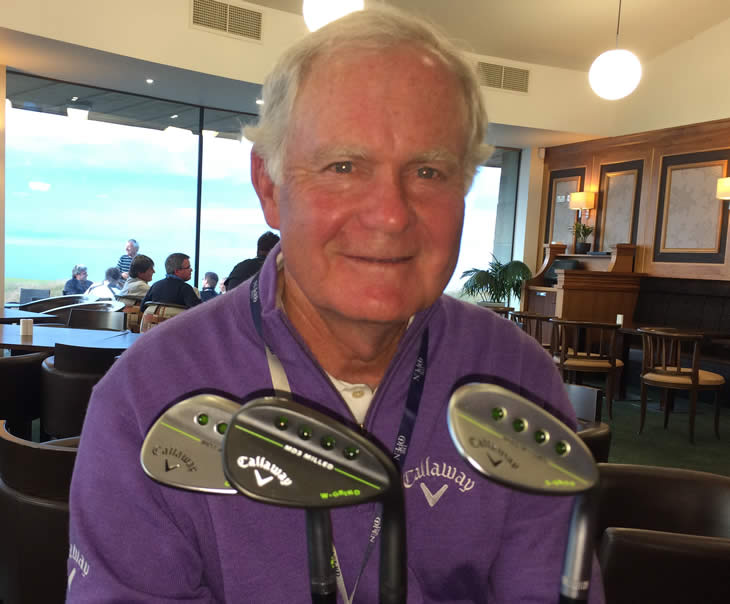
In previous generations of Mack Daddy Wedges you have had the C-Grind and the S-Grind. What made you introduce the wider W-Grind for the Mack Daddy 3 Milled?
To me that was the one width geometry that we were missing compared to the 588 wedge I made at Cleveland, which had a wide sole, which is really what the W-Grind is. I wanted to re-create that sole in the Callaway wedges as it is really good for softer conditions and softer sand.
It plays a lot like the PM grind in the Mickelson wedge, although it has a little different geometry on the sole, but it has the same width and width is critical for turf and sand interaction and it plays beautifully. We only have that in the lofts of 54 through 60 degrees and I think everybody will enjoy it.
Does the level of bounce really comes from the width of the sole as opposed to the camber of the sole?
Yes. The wider the sole is the less bounce you need because as soon as you open it up the width creates the bounce naturally, so the W-Grind has about 10 degrees of bounce and that is all you need.
I recently did a test with a lot of different bounces and noticed the importance of the hand position. With the hands in the correct place, that allowed the bounce to work and really gave a far larger margin for error, so I wonder why there haven’t been more of these wider sole, higher bounce wedges before?
Well everybody was fighting me and saying that ‘No, you have to have low bounce', whereas I kept saying that you need bounce. In fact the idea of needing low bounce has led to some manufacturers putting the incorrect bounce on the sole, for example it said 8° when in fact it had 10°.
Is that the difference between real and effective bounce?
Sometimes it is called effective bounce, but there is only one way to measure bounce in my opinion. Bounce is two things – it is the angle of the sole with the face square to the target, but it is also the width in relation to the leading edge and how you then open the club face up which is effective bounce. So the narrower the sole the more bounce you need and the wider the sole the less bounce you need. That is the general rule.
The impression was the Pro’s played more bounce, they play between 8 and 11 degrees in their lob wedges, 8 at the very lowest, which doesn’t sound very much, but it is plenty when you open the club face up, which the Pro’s always do with their lob wedges.
So the W-Grind was the one that was missing and we say it is for soft conditions, but it is really good in all conditions.
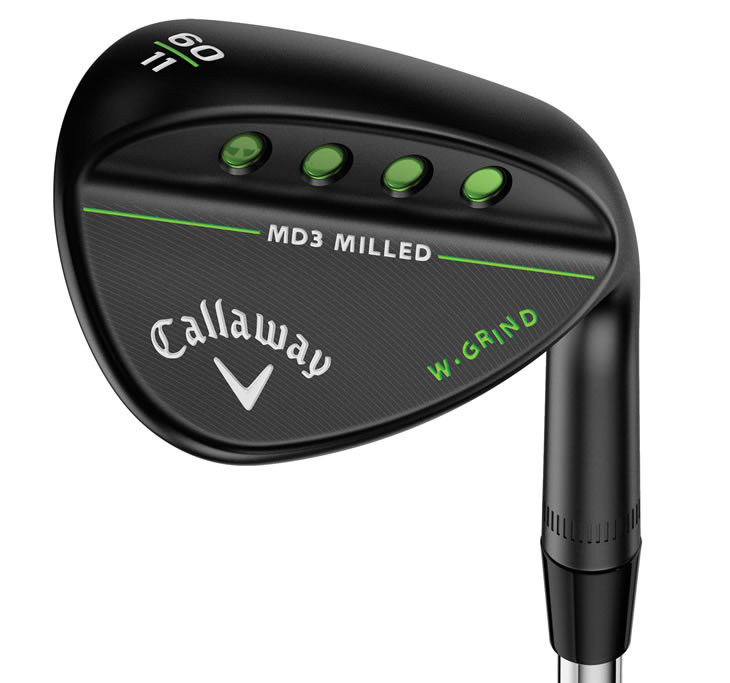
You talk about opening the wedge up. Do amateur pleayers need to open the wedges up these days as the loft increments are less?
Well it is really about technique. Through our Wedgeducation series and other education initiatives that I am involved in we show people how to use wedges. Through correct technique you can improve your short game much faster than in any other area of you game and opening up the wedge is part of that. People don’t understand that the short game stroke is totally different from the rest of the game.
One thing I found interesting was the idea in the Mack Daddy 3 range of an all round wedge that suits all the conditions that amateur players face. Why have you done this?
If the conditions are extreme, and you constantly play firm sand and firm conditions for example, then you need to look for lower bounce options in the lob wedge which would be 8 or 9 degrees.
But if you have varying conditions you need more flexibility. I was just playing Royal Lytham & St Annes and the turf conditions were very firm, but the sand was soft. You have to have something that will work with firm conditions, but then in the sand you will need to open up the blade so you don’t dig into the sand too much, so again technique is very important.
That is what we found on the bounce test, where we tested on both links and parkland, that the proper technique allowed the wedge to work across conditions.
I agree with you. If you have proper technique then you can adapt to all conditions using 8 or 9 or 10 degrees of bounce. Chambers Bay was very firm, much firmer than here at St Andrews this week, it was rock hard and I was working with some guys and I wasn’t changing their wedges, I was showing them technique to set deal with the conditions.
With the Mack Daddy 3 Wedges we created a little more generous sole geometries in all of the grinds to allow players to use the sole with correct technique to achieve better results.
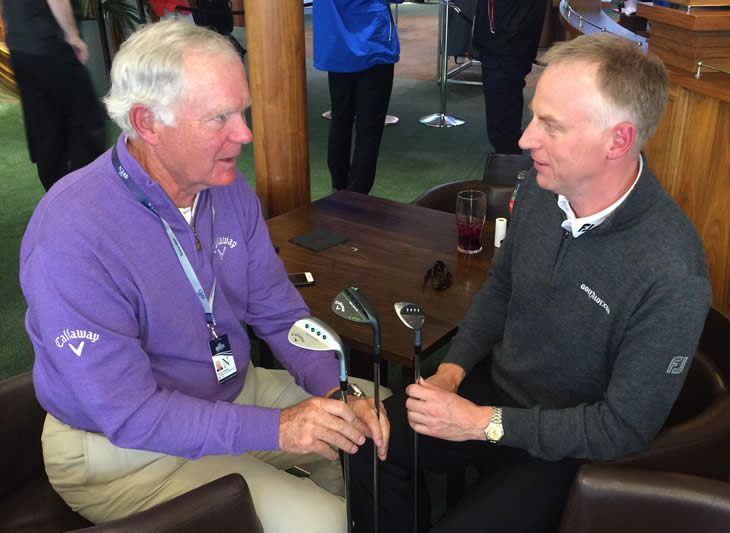
The Mack Daddy 3 wedges have distinct holes drilled in the back of the club. Is that to allow you to move weight around?
Well there are a couple of reasons. We had to do that with the PM grind, Phil’s wedge, as it was so big that we needed to keep the weight down, and it is a great identifier, you can see immediately that it is a Callaway wedge.
So it was partly for that. But also anytime you take weight from low in the club and raise it up you are going to create more spin, just like in a driver, so that is an added bonus.
Was that something you knew before you had to move the weight for the PM wedge?
Yes we knew that in advance. Trevino was one of the first who asked for that when I made wedges for him. He said he didn’t want us to touch the wedge, he wanted the wedges raw, with a rough surface because he was such a brilliant wedge player. But then he would take a big drill to make holes to take the weight out and he got more spin on his wedges than anybody. So it’s a combination of a cool look and an easy way to take weight out of the wedge.
We also have a 3D milled pattern on the face to the limits that the R&A and USGA rules allow us to do. You can only mill down 1/10,000th of an inch and this new pattern is more effective and less intrusive to the eye than in the Mack Daddy 2 wedges.
Looking back, what do you think of the groove rule changes that the governing bodies implemented in 2010?
I think the USGA and the R&A have the best intentions for the game of golf. I don’t think there has really been much effect with the changes that were brought in for grooves – in fact I think they may have improved scores.
With the middle wedge you now get a much more consistent run out on shots where before the larger grooves meant that you just spun it too much and you couldn’t, for example, hold a back pin as there was too much spin.
So for better players with the ability to control the ball I think the changes have allowed them to improve their scores.
The Mack Daddy 3 wedges have different grooves dependent on the wedge so that they flow into the iron set for consistent spin. The lob wedge has the most aggressive groove with a 5° sidewall, then the middle wedges have a 20° side wall and then the gap wedges have a 30° side wall, the same as the irons.
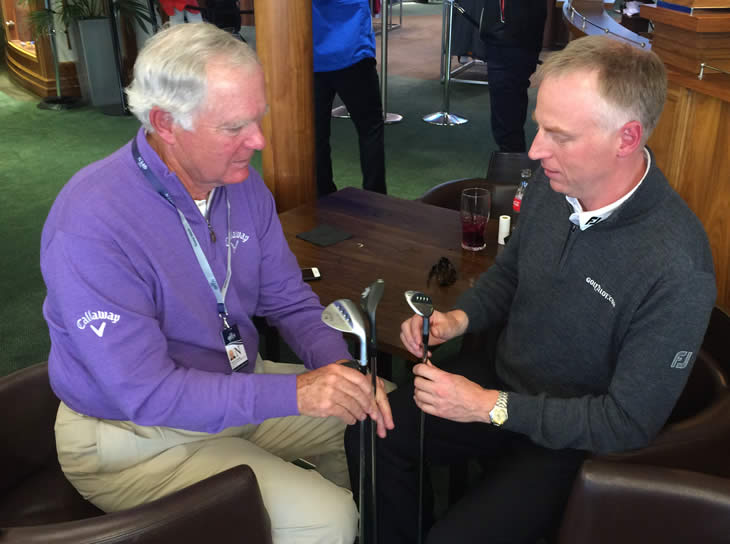
Do you think that players are using other ways to control the ball like trajectory, as you don’t really see people zipping the ball back any more, or is it that the balls have got harder?
Well our new ball, the Chrome Soft, spins pretty well and the durability of the covers are amazing. I’ve played the ball and then I’ve put it back in a group of balls and I can’t find which one I’ve actually played with.
We do spin tests and we are up to 12-13,000 rpm on lob wedges with a full swing, so we are back to getting some pretty high spin numbers. That is where the spin is most critical with the lob wedge when you have short sided yourself and you are trying to get it up and down.
With the PM wedge do you think that many amateurs will be using that given the skill levels involved in the kind of shots it was designed for Phil Mickelson to hit?
Absolutely. I use the PM wedge at the moment. Phil is amazing but the issues are the same for everybody. Anytime you open up a wedge, in rough especially, you tend to hit the ball high on the toe and Phil found that with a conventional wedge shape he would go under the ball.
So we made the PM Grind wedge for him by essentially welding two wedges together to create the larger toe, it was just a prototype which I took to Phil on Tour to see if we were going in the right direction and he said it looked great and tried it and he used it straight away.
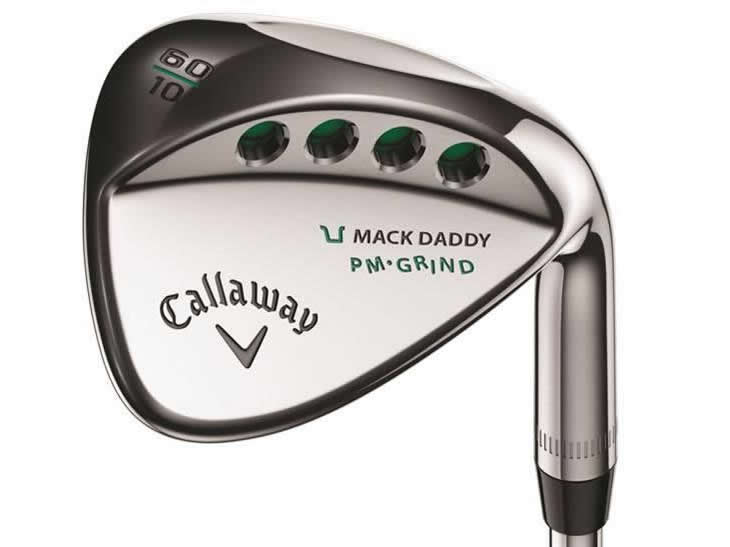
We thought why not take that design, refine it and release it as a club to the market. It has a little more bounce at 13°, meaning he can have a 53° to use as his gap wedge, and a 59° and a 64° which suits his game perfectly.
But it also gives other players the opportunity as they now have that technology that allows them to open it up, with the grooves going all the way up the face in the toe. They can stay away from the hosel and a sole geometry that keeps the leading edge under the ball and makes it a lot easier to play shots around the green.
With soft sand it is amazing, in fact Jim Furyk said that today, it makes the bunker shot much easier by using setting the loft early and using the bounce as your friend. As we say in the U.S. it is almost like cheating!